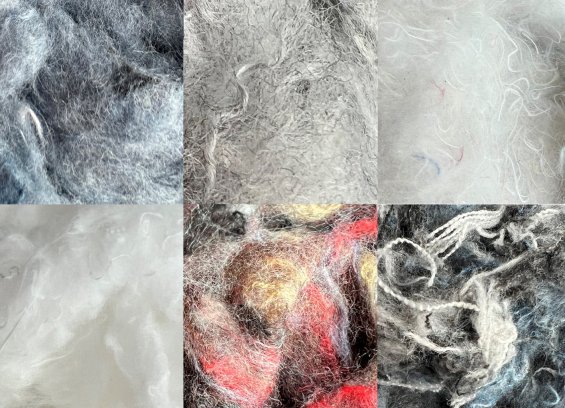
Practical Uster guide on recycled fibres
Opinion


Essential reference tool for processing quality turns a corner.

20th March 2023
Adrian Wilson
|
Berne, Switzerland
The 2023 edition of the Uster Statistics – the industry benchmark for achieving and guaranteeing quality in yarn spinning – will include a section on the processing of recycled fibres for the first time.
Speaking at a special press event organised by industry association Swiss Textile Machinery in Berne last week (March 16-18), Uster’s executive vice-president of marketing and business development Sivakumar Narayanan said that a major bottleneck in spinning with recycled yarns is achieving the necessary quality.
“Spinning yarn blends of virgin and recycled fibres is a much bigger challenge than any other commonly used blend, but the results can still be acceptable with comprehensive quality testing, know-how and experience,” he said.
Background
The European Union’s Strategy for Textiles is calling for all textile products on the EU market to be durable, repairable and recyclable – and largely made of recycled fibres – by 2030
The use of mechanically recycled fibres in spinning has specific quality considerations – such fibres have a higher short fibre and nep content and may often be coloured, particularly if post-consumer material is used. It’s also true that recycled yarns have limitations in terms of fineness. Officially, a yarn can only be branded ‘recycled’ when spun with more than 20% recycled fibres.
This is set by the Global Recycled Standard (GRS), a voluntary product specification for tracking and verifying the recycled content of materials in a final product.

Blends
Blending virgin and recycled cotton together is well known as a challenge for spinners. The smartest spinners and world-class processes simply can’t overcome the fact that some important quality parameters will be adversely affected. It’s clear that the use of recycled cotton in a blend with new fibres will impact on both the overall yarn strength and its CV%. Even the most sophisticated spinning machinery won’t fix the problem.
Awareness of the risk of yarn quality deterioration with recycled fibre blends means that quality control is the only way to assure customer satisfaction. Even then, the task is far from simple. When spinning new materials, Uster strongly recommends taking both numeric test results and graphic evaluations into account, to eliminate the risk of problems in further processing.
Defects
Spinners face major difficulties because of the high proportion of short fibres in recycled cotton (CO-R) and the fact that, when mixing with virgin cotton (CO), the fibre length distribution is sometimes sub-optimal. This results, for example, in incorrect guidance of short fibres in the drafting system and potential draft errors.
In tests, an Ne 20 rotor yarn of 75% CO and 25% CO-R was compared with a 100% cotton yarn. The values for evenness, imperfections and hairiness were measured and produced a CVm% of 22% in Uster Statistics, which might appear to indicate excellent quality for the recycled yarn if relying on numeric values alone. In fact, closer analysis with Uster Tester spectrograms showed a draft error at the draw frame. In this case, the problem was detected before causing an uneven structure in the subsequent fabric made from the yarn.
Common language
It is an unavoidable fact that blending virgin and recycled cotton will make some quality parameters worse. Using recycled fibre is often desirable, but it creates a new reality for the industry. To cope with the risks, better communication and a common understanding are needed throughout the textile value chain.
“Uster’s common language of quality will be vital in improving communication throughout the textile industry,” Narayanan said. “The first Uster Statistsics was published in 1957 as a three-page document and over the decades has become the international reference language for both buyers and sellers of yarns. Now we are on a new journey. Introducing the first statistics on processing recycled fibres was not easy, since at the moment there are limited producers, samples and tests, but spinners already have the tools they need, allowing them to benefit from both laboratory instruments and quality monitoring systems to optimize quality and productivity.
“Their experience, combined with Uster knowledge and the latest technology in quality control and analysis systems, represent a promising basis for the future. The new reality of the need for closer communication and cooperation will include all players from fibre to fabric. It’s an essential debate for everyone – and we are ready to assist in accelerating the transformation.”

Business intelligence for the fibre, textiles and apparel industries: technologies, innovations, markets, investments, trade policy, sourcing, strategy...
Find out more